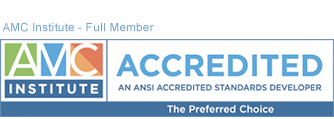Another in a series of articles related to association management selected from our reading list by:
Robert O. Patterson, JD
CEO/ Principal
The Center for Association Resources, Inc.
It deals with strategies and methods involving the fund raising of non-profit organizations
Fund raising has always been an issue for most non-profit organizations. It is also a limiting factor in the reach and functioning capacity of the organization. A regular flow of funds is required to keep the organization in its tracks. All non-profit organizations should have a definite policy towards fund raising. Though fund raising is no easy job, it can be managed well with steady flow of funds and quality capital, all made possible with some fore planning and good execution.
Everything starts from the administration of the organization itself. The goals of the organization must be clearly set and should be viable for effective propaganda and response. For example, a group that simply says “save the trees” or “cancer research foundation” is going to pass up as just another organization. This should not be the case. The goals and achievements of the organization must clearly be seen from anybody’s perspective. It is what sets the targets and urges people to contribute funds. A good spokesperson and contact personnel are a must.
Managing the collected funds is another important factor. The contributors would also like to see how their money is being used up. A good team capable of budget planning is required. It can also be done by another third party. But it is better to keep the management of funds transparent as that itself can be used as a propaganda tool effectively.
A fully dedicated team of people is required to be set up for the sole purpose of fund raising. It must consist of planners, team leaders, liaisons, creative designers, advertisers and special people who can raise funds using their skills or status (e.g. Celebrities). This team must foresee and execute the various plans made towards fund raising. They must identify potential targets and decide on the way of approach. Having an effective team solely for this purpose can be the difference between efficiency and bankruptcy.
Target identification is the step involving the identification of the people from which the organization can raise funds. The most important target group will be the people who are directly connected with the goal of the organization (e.g. Persons affected by cancer are viable target groups for cancer research institutes). Other important target groups are business tycoons, general public, politicians, stars, celebrities and so on. Employing different methods for each of these groups are vital for success.
The methods that can be used for fund raising vary from simple handouts and posters to mega campaigns. But in order to be effective, it must be target specific. The common methods that can be employed are posters, handouts, TV shows, rallies, ads, demonstrations, campaigns etc. General public can be campaigned with posters and rallies, as well as mass media. A single TV show covering the activities of the organization can generate a lot of funds. Creative ads and posters in net can be a great propaganda tool (e.g. Green Peace ads). Corporate companies can be made to contribute by striking deals so that they can use the publicity and the organization can use the funds. Billionaires can be canvassed for donations. Having a celebrity in the organization can work wonders. In this age of social networking, a good ad in websites like Twitter can be very effective.
There are also other sources like fund raising shows, but it all comes to how the organization effectively uses them to further spread their propaganda. Instead of focusing on the immediate requirements, a definite long term policy and a good administration system towards fund raising can get any non-profit organization free from financial woes.
fund raising,non-profit,non-profit organization,methods of fund raising,The Center for Association Resources







